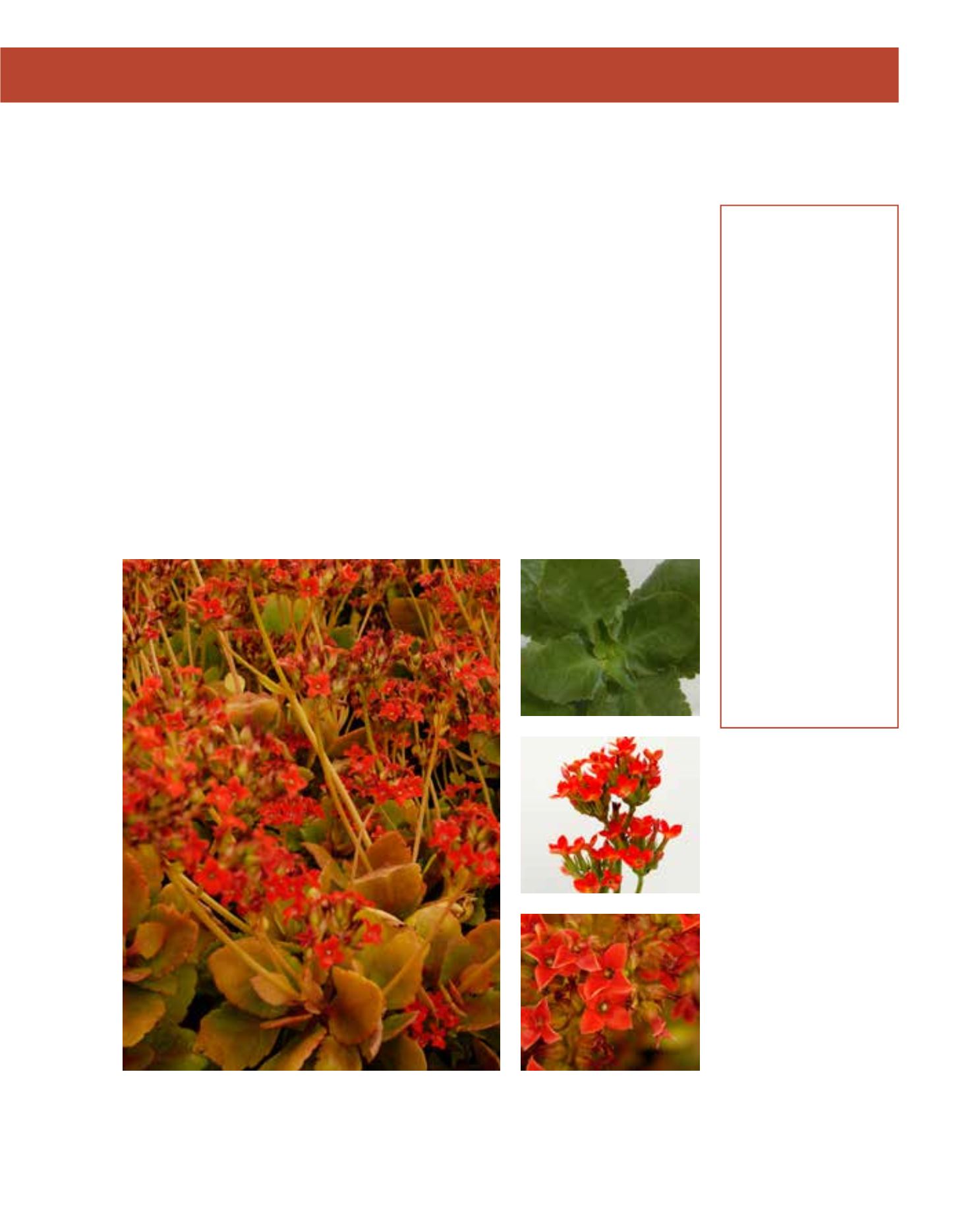

GENERAL
Origin
:
sub-tropical,
tropical
Humidity
:
semi-arid, semi-
humid
Propagation :
cuttings
Maintenance :
low
CONDITIONS
Urban climate :
resistant
Dessication :
resistant
Stagnant water :
vulnerable
Irrigation
:
low
Salinity/ppm :
moderate (2000
ppm)
Hardiness
:
0°C
SHAPE
Type
:
cacti, succulents
Height
:
0.15 m-0.4 m
Spread
:
0.4 m-0.6 m
Foliage
:
evergreen
FLOWER
Colour
:
red, pink, white,
orange, purple,
yellow
Period
:
March -
December
FRUIT
Type of fruit :
capsule
Fruit size
:
0.5 cm
Toxicity
:
inedible
While most succulents are grown for their remarkable foliage, thickened stems or spectacular
thorns, this succulent attracts attention with its brightly coloured flowers. Native to Madagas-
car, Flaming Katies grow a compact, round shape to about 40 cm high. Their fleshy, deep-green
leaves are round or oval with scalloped edges. Clusters of small tubular flowers show up in the
colours white, yellow, orange, red, pink or purple. They appear in winter for weeks. The Flaming
Katy may grow as a tough indoor plant or as a highly ornamental bedding plant. The soil should
be well drained. The most frequent problems for pot-grown Kalanchoes are overwatering and
applying cold water that shocks the roots. During dry periods with insufficient watering, the
leaves begin to turn yellow and shrivel up before they are dropped. This starts from the bottom
progressing upwards, until the branches bear remnants of foliage that will not become attractive
again. Cutting back may result in rejuvenating growth, but it is more appropriate to replace the
entire planting. After flowering, the flower stalks should be cut off to give a neat appearance and
to induce the production of new buds. A disadvantage is the brittle leaves and branches. They are
easily damaged, which means that the Flaming Katy should be located carefully. In Arriyadh’s
climate, it does best if not exposed to full sun, especially in the afternoon. It should be used to
bring its splendid colours into shady areas. It is very easy to multiply Flaming Katy by cuttings
in spring or autumn.
176
Kalanchoe blossfeldiana,
Crassulaceae
Flaming Katy
















